vintage royal fashion
- Radar
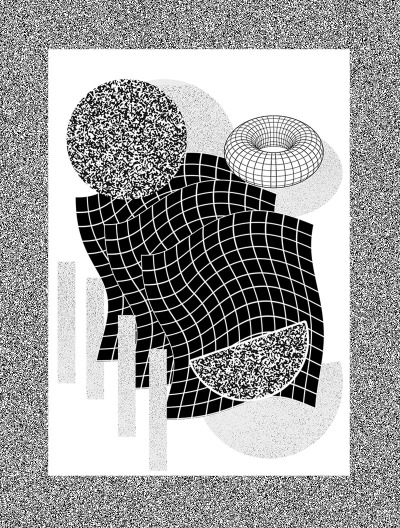
royals-and-quotesroyals-and-quotes.tumblr.com
Rambagh Palace, Jaipur, India
The Rambagh Palace in Jaipur is the former residence of the Maharaja of
Jaipur.
The first building on the site was a garden house built in 1835 for the
wet nurse of prince Ram Singh II. In 1887, during the reign of Maharaja
Sawai Madho Singh, it was converted into a modest royal hunting lodge,
as the house was located in the midst of a thick forest at that time. In
the early 20th century, it was expanded into a palace to the designs of
Sir Samuel Swinton Jacob. Maharajah Sawai Man Singh II made Rambagh his
principal residence and added a number of royal suites in 1931. After
India became independent and the princely states united, the Palace
became the Government House. By the 1950s, the royal family felt that
the upkeep of the palace and its 47 acres (190,000 m2) of gardens was becoming very costly. Therefore, in 1957 they decided to convert it into a luxury hotel.
Queen of the Netherlands
(2 of 2)
(2 of 2)

of the Netherlands
(31 August 1880 – 28 November 1962). She was born Princess Wilhelmina
Helena Pauline Maria of the Netherlands, Princess of Orange-Nassau, the
only child of King William III and Queen Emma of
the Netherlands. She was Queen Regnant of the Kingdom of the Netherlands
from 1890 to 1948. She reigned for nearly 58 years, longer than any
other Dutch monarch.
On 4 September 1948, Wilhelmina abdicated in favour of her daughter
Juliana.

of the Netherlands
(30 April 1909 – 20 March 2004). She was born Louise Emma Marie
Wilhelmina, the only daughter of Queen Wilhelmina of the Netherlands
and Prince Henry, Duke of Mecklenburg-Schwerin.
Juliana was inaugurated
Queen of the Netherlands
in 1948 and continued to reign for nearly 32 years until 1980. Queen
Juliana abdicated on 30 April 1980 and her eldest daughter Beatrix
succeeded her.
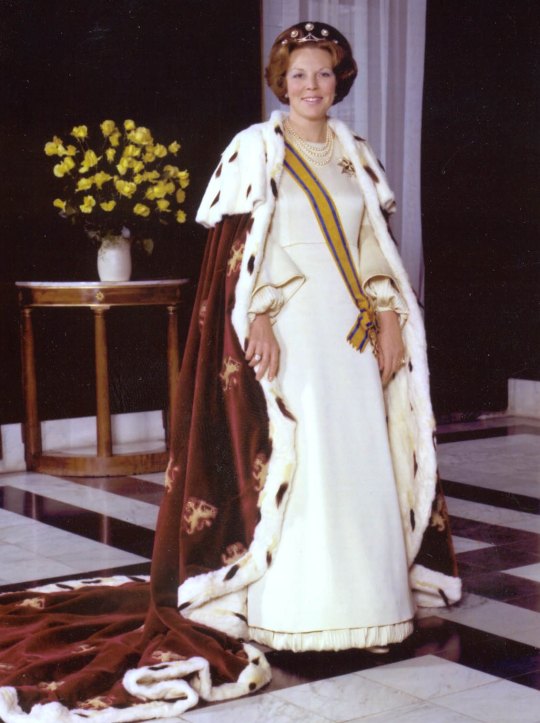
31 January 1938)
She is the eldest daughter of Queen Juliana and her husband, Prince
Bernhard of Lippe-Biesterfeld. Upon her mother’s accession in 1948, she
became heir presumptive. When her mother abdicated on 30 April 1980,
Beatrix succeeded her as queen. On 30 April 2013, Beatrix abdicated in
favour of her eldest son, Willem-Alexander, and resumed the title of
princess.

May 1971)
was born in Buenos Aires, Argentina, daughter of Jorge Zorreguieta and
his wife, María del Carmen Cerruti Carricart. She married
Willem-Alexander, The Prince of Orange, on 2 February 2002 The couple
has three daughters: Princess Catharina-Amalia, Princess Alexia, and
Princess Ariane.
On 30 April 2013, William Alexander was
inaugurated as King of the Netherlands and Maxima became the Queen
Consort of the Netherlands. She became the first Queen Consort since
1890.
Queens of The Netherlands (1/2)

Friederike Luise Wilhelmine of Prussia (18 November 1774 – 12
October 1837).
She was the fourth child of eight born to King Frederick William II of
Prussia and Queen Frederica Louisa. Wilhemine was the first wife of King William I of the Netherlands and so the first Queen Consort of the Netherlands from 1815 to 1837.

Anna Pavlovna of Russia (18 January 1795 — 1 March 1865). She was the daughter of Emperor Paul I of Russia and Empress Maria Feodorovna.
On 21 February 1816, she married the Prince of Orange, who would later become King William II of the Netherlands. Anna was Queen Consort of the Netherlands from 1840 until her husband died in 1849.

Sophie of Württemberg (Sophia Frederika Mathilde; 17 June 1818 – 3
June 1877). She was the daughter of King William I of Württemberg and
Grand Duchess Catherine Pavlovna of Russia. She married the Prince of
Orange, who would later become King William III of the Netherlands on 18
June 1839. Sophie was Queen Consort of the Netherlands from 1849 until
she died in 1877.
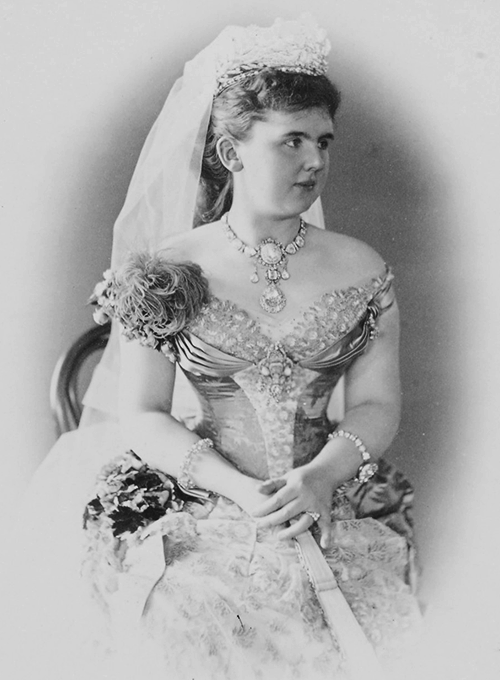
She was born as Adelheid Emma Wilhelmina Theresia, Princess of Waldeck and Pyrmont,
daughter of Georg Viktor, Prince of Waldeck and Pyrmont and Princess Helena of Nassau. Emma married the elderly King William III of the Netherlands
on 7 January 1879 and became Queen Consort of the Netherlands until her
husband died in 1890.
She continued as regent for the new monarch, her underage daughter,
Wilhelmina, the late King’s only surviving child until Wilhelmina’s
eighteenth birthday on 31 August 1898.
I thought it was Anna Paulowna not Pavlovna? Or is both fine?
Her real name was Anna Pavlovna,
Grand Duchess of Russia. In the Netherlands, due to nineteenth century
Dutch transliteration conventions, she is better known as Anna Paulowna.
Grand Duchess of Russia. In the Netherlands, due to nineteenth century
Dutch transliteration conventions, she is better known as Anna Paulowna.
Queens of The Netherlands
(1 of 2)
(1 of 2)

Friederike Luise Wilhelmine of Prussia (18 November 1774 – 12
October 1837).
She was the fourth child of eight born to King Frederick William II of
Prussia and Queen Frederica Louisa. Wilhemine was the first wife of King William I of the Netherlands and so the first Queen Consort of the Netherlands from 1815 to 1837.

Anna Pavlovna of Russia (18 January 1795 — 1 March 1865). She was the daughter of Emperor Paul I of Russia and Empress Maria Feodorovna.
On 21 February 1816, she married the Prince of Orange, who would later become King William II of the Netherlands. Anna was Queen Consort of the Netherlands from 1840 until her husband died in 1849.

Sophie of Württemberg (Sophia Frederika Mathilde; 17 June 1818 – 3
June 1877). She was the daughter of King William I of Württemberg and
Grand Duchess Catherine Pavlovna of Russia. She married the Prince of
Orange, who would later become King William III of the Netherlands on 18
June 1839. Sophie was Queen Consort of the Netherlands from 1849 until
she died in 1877.

She was born as Adelheid Emma Wilhelmina Theresia, Princess of Waldeck and Pyrmont,
daughter of Georg Viktor, Prince of Waldeck and Pyrmont and Princess Helena of Nassau. Emma married the elderly King William III of the Netherlands
on 7 January 1879 and became Queen Consort of the Netherlands until her
husband died in 1890.
She continued as regent for the new monarch, her underage daughter,
Wilhelmina, the late King’s only surviving child until Wilhelmina’s
eighteenth birthday on 31 August 1898.
REGALIA OF THE RUSSIAN MONARCHS - TSAR ALEKSEY MIKHAILOVICH (Son of Tsar Mikhail Feodorovich, crowned in 1645)
1. Crown of Monomakh (1498) - The
most ancient crown of the Russian Tsars. An ancient symbol of Russian
autocracy, the crown consists of an onion shaped skullcap manufactured
from eight joined panels of filigreed gold which sit on top of a wide
sable brim. The crown is ornamented with large cabochon jewels and
smaller pearls. It is topped by a cross with a pearl at each end (which
was added centuries after the cap was originally made).
2. Sceptre and Orb -
Sceptre was executed in Istanbul in 1658 and presented to the Tsar by
a Greek Ivan Anastasov. This oriental sceptre has mace form. It has
268 diamonds, 14 emeralds, 360 other precious stones. The Orb was made
in Istanbul in 1662 and has 179 diamonds and 340 other precious stones.
3. Barmy (Regalia Collar) -
Barmy of Alexey Mikhailovich executed in Istanbul on his order in
1662. It is a round silk collar, adorned with seven precious medallions.
4. Diamond Throne -
The throne was made by Persian makers in 1659. The throne base is
made of sandal wood. It is coated with golden and silver plates, adorned
with fancy ornaments, 4000 silver rubles and 19000 copper
rubles. For the prevalence of diamonds the throne was named “Diamond
Throne”. In total the throne has 876 diamonds and 1223 other gemstones.
1. Crown of Monomakh (1498) - The
most ancient crown of the Russian Tsars. An ancient symbol of Russian
autocracy, the crown consists of an onion shaped skullcap manufactured
from eight joined panels of filigreed gold which sit on top of a wide
sable brim. The crown is ornamented with large cabochon jewels and
smaller pearls. It is topped by a cross with a pearl at each end (which
was added centuries after the cap was originally made).
2. Sceptre and Orb -
Sceptre was executed in Istanbul in 1658 and presented to the Tsar by
a Greek Ivan Anastasov. This oriental sceptre has mace form. It has
268 diamonds, 14 emeralds, 360 other precious stones. The Orb was made
in Istanbul in 1662 and has 179 diamonds and 340 other precious stones.
3. Barmy (Regalia Collar) -
Barmy of Alexey Mikhailovich executed in Istanbul on his order in
1662. It is a round silk collar, adorned with seven precious medallions.
4. Diamond Throne -
The throne was made by Persian makers in 1659. The throne base is
made of sandal wood. It is coated with golden and silver plates, adorned
with fancy ornaments, 4000 silver rubles and 19000 copper
rubles. For the prevalence of diamonds the throne was named “Diamond
Throne”. In total the throne has 876 diamonds and 1223 other gemstones.
REGALIA OF RUSSIAN MONARCHS - TSAR MIKHAIL FEODOROVICH
First Russian Tsar from the Romanov Dynasty, reigned from 1613 until 1645.
1. The Grand Attire - The Grand Attire of Tsar Michael Feodorovich consist of crown, sceptre and orb. The crown was executed by Kremlin masters in 1627.
Crown has 177 precious stones and pearls. The sceptre and orb were donated
to Tsar Boris Godunov in 1604 by the Great Embassy of Rudolph II, Emperor of the Holy Roman Empire. The
huge golden orb is adorned with chased scenes from the Old Testament
telling the life story of King David. These three items are usually
called “The Grand Attire”.
2. Golden throne - The
throne of Tsar Mikhail Feodorovich was executed at the beginning of the
17th century from the old chair of oriental workmanship which had
belonged to Ivan the Terrible. In its form, high back and arms, it
resembles Russian armchairs, but oriental motifs still remain in the
ornament. About 13 kilos of gold, gemstones and pearls were used for its
ornamentation. In total on this throne are surviving 1325 rubies and
tourmalines, 559 turquoises, 16 pearls, 28 sapphires and 36 other
precious stones.
First Russian Tsar from the Romanov Dynasty, reigned from 1613 until 1645.
1. The Grand Attire - The Grand Attire of Tsar Michael Feodorovich consist of crown, sceptre and orb. The crown was executed by Kremlin masters in 1627.
Crown has 177 precious stones and pearls. The sceptre and orb were donated
to Tsar Boris Godunov in 1604 by the Great Embassy of Rudolph II, Emperor of the Holy Roman Empire. The
huge golden orb is adorned with chased scenes from the Old Testament
telling the life story of King David. These three items are usually
called “The Grand Attire”.
2. Golden throne - The
throne of Tsar Mikhail Feodorovich was executed at the beginning of the
17th century from the old chair of oriental workmanship which had
belonged to Ivan the Terrible. In its form, high back and arms, it
resembles Russian armchairs, but oriental motifs still remain in the
ornament. About 13 kilos of gold, gemstones and pearls were used for its
ornamentation. In total on this throne are surviving 1325 rubies and
tourmalines, 559 turquoises, 16 pearls, 28 sapphires and 36 other
precious stones.

JEWELS OF THE ROMANOVS - Two
eagles with the crown comes from Maria Paleologue, wife of Tsar Ivan
III the Great. She brought her Greek Orthodox faith to Russia and
founded the Russian Orthodox Church. The two eagle symbol is her legacy,
and remains the Russian coat of arms to this day.
eagles with the crown comes from Maria Paleologue, wife of Tsar Ivan
III the Great. She brought her Greek Orthodox faith to Russia and
founded the Russian Orthodox Church. The two eagle symbol is her legacy,
and remains the Russian coat of arms to this day.



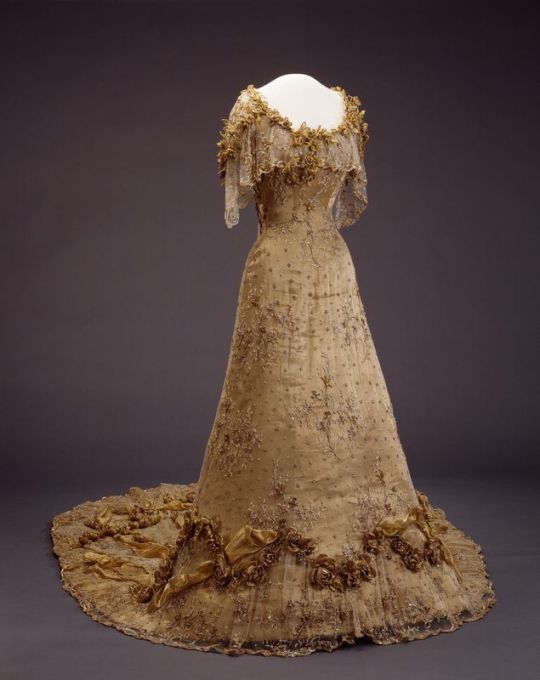
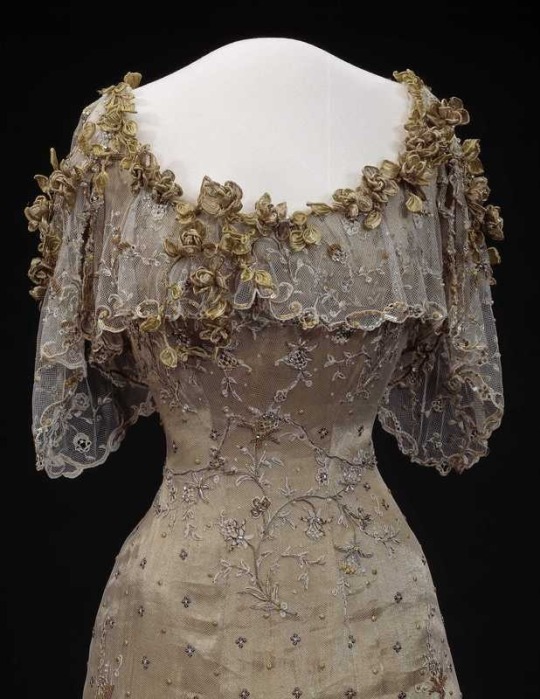
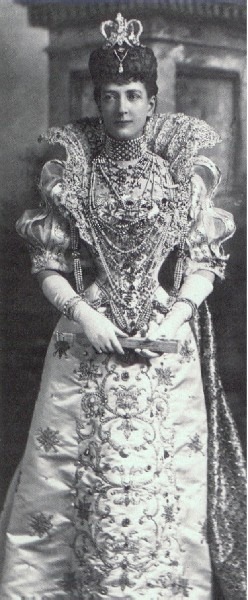
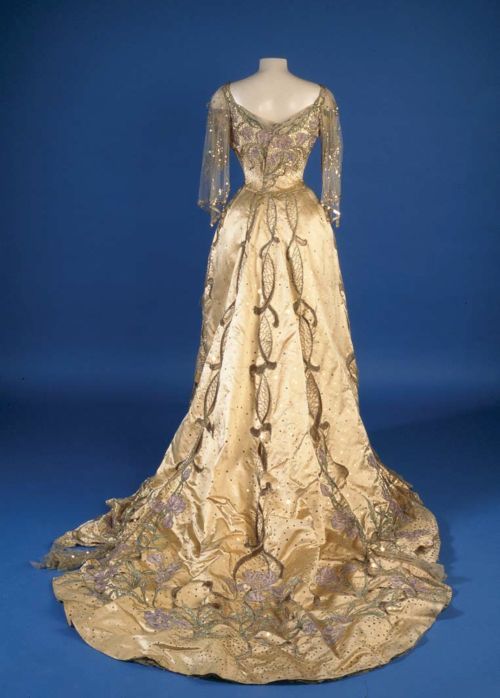

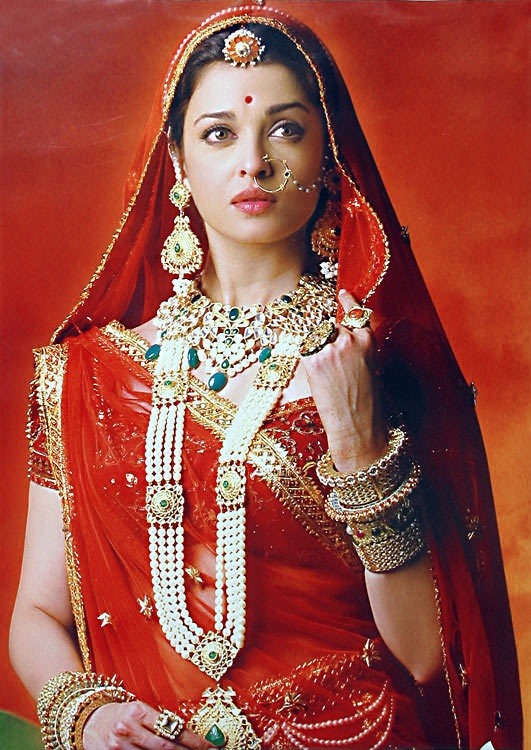
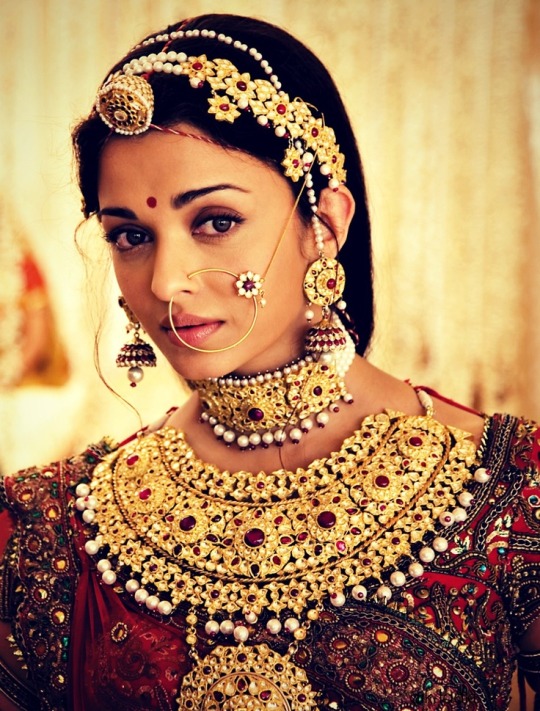






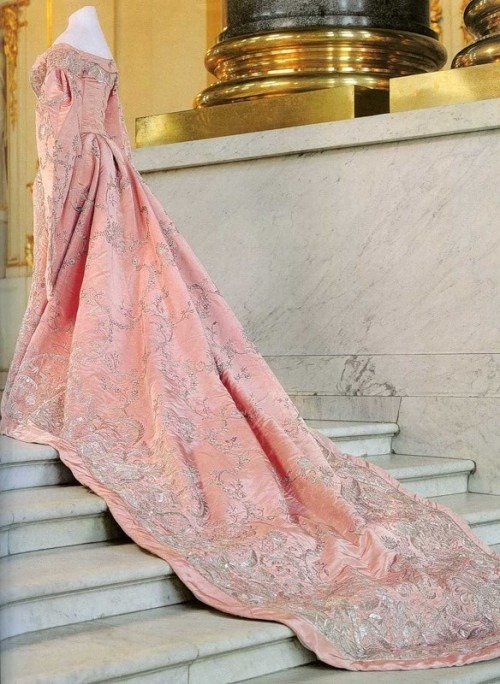










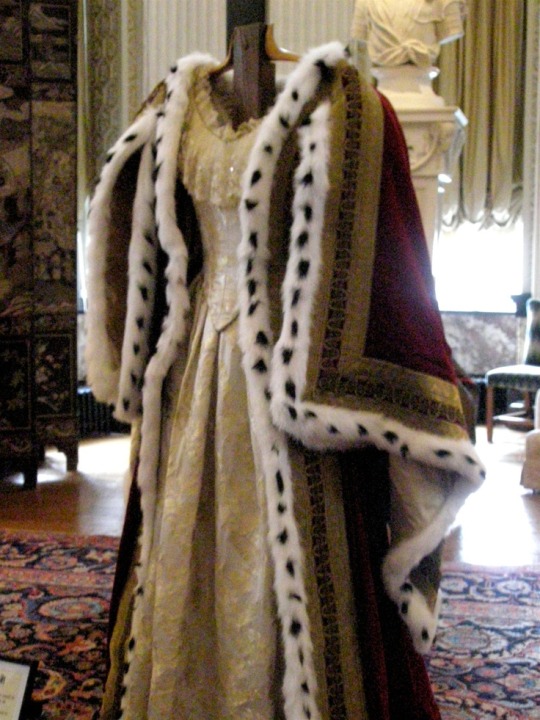



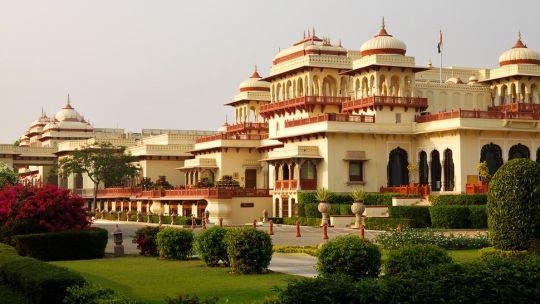
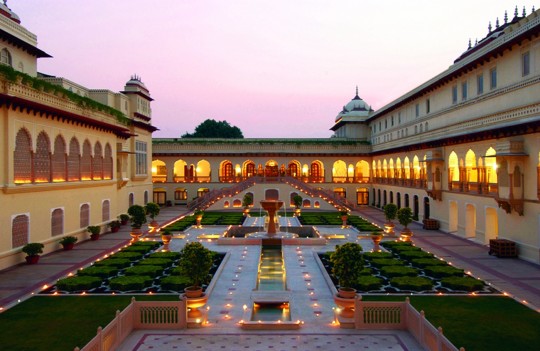
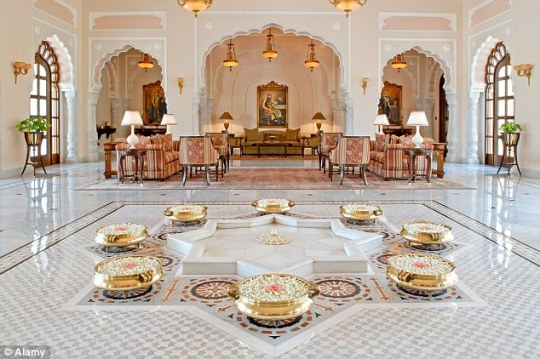





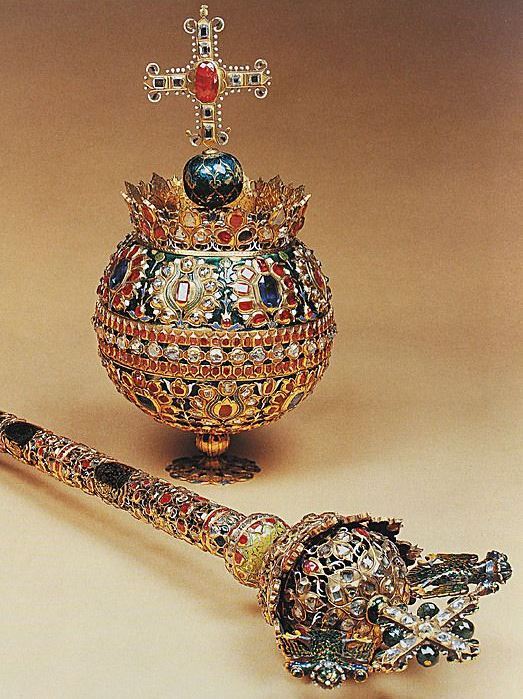

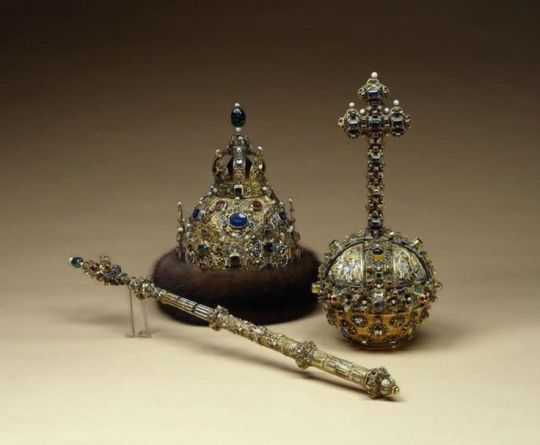


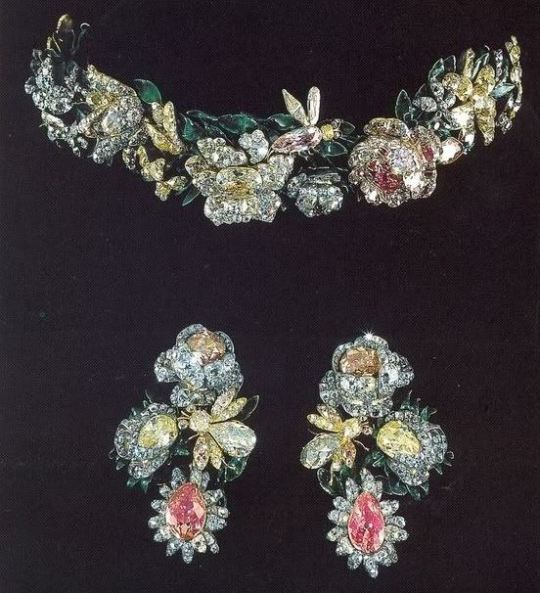
No hay comentarios:
Publicar un comentario